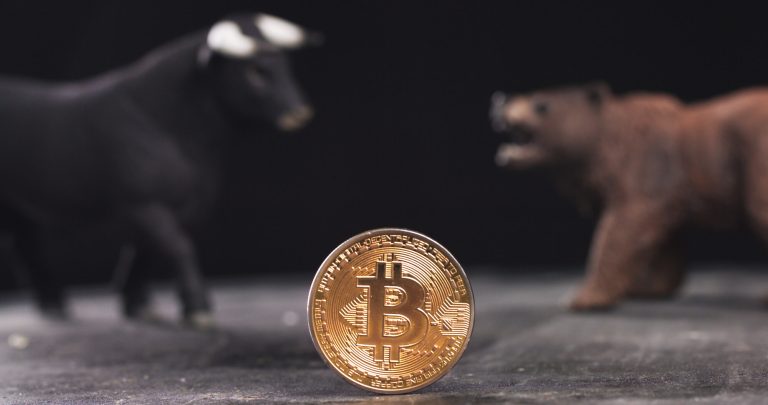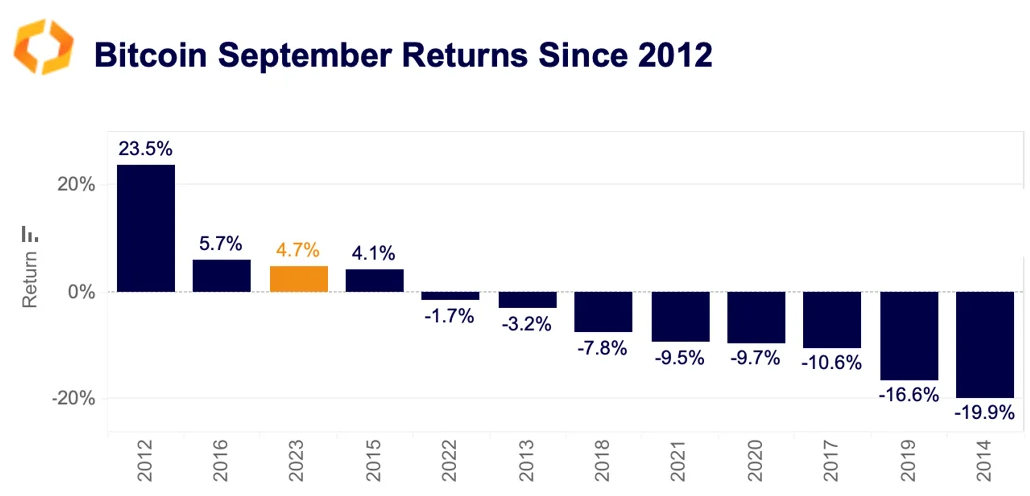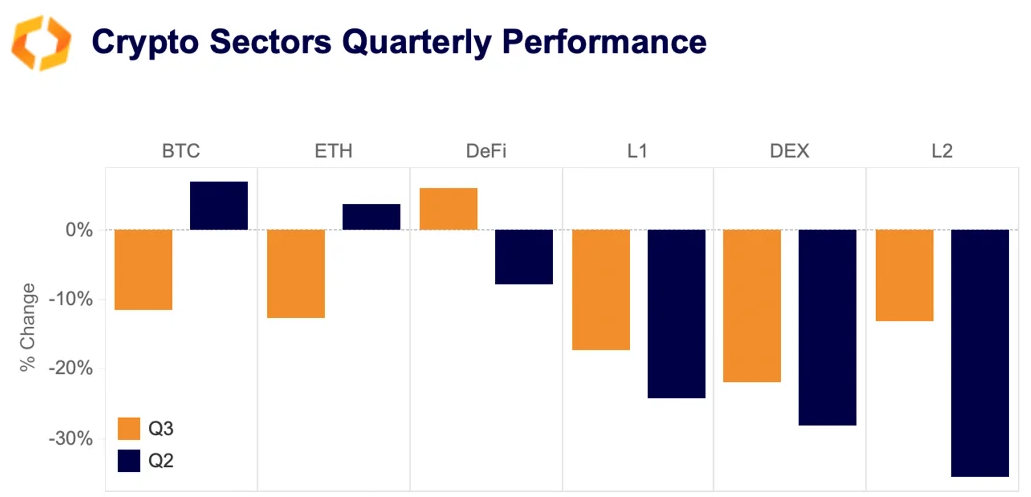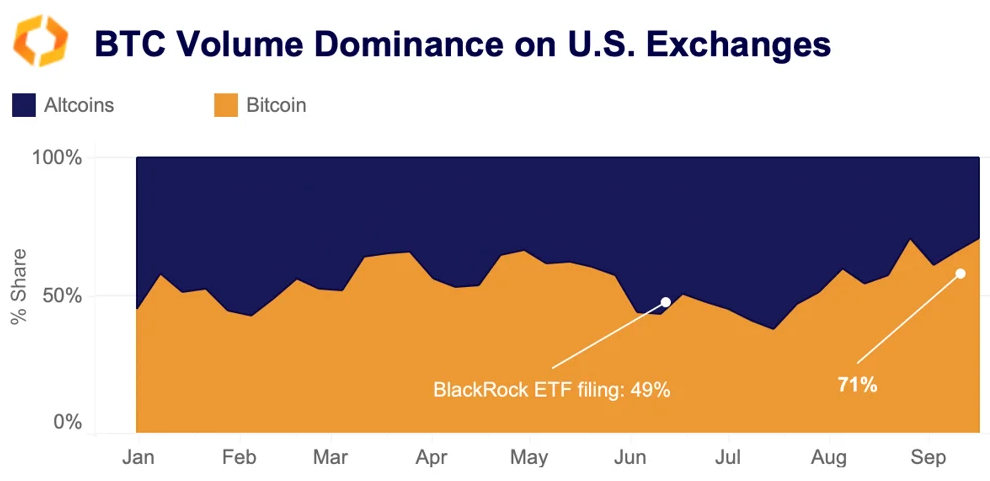A summarizing review of what has been happening at the crypto markets of the past week. A look at trending sectors, liquidity, volatility, spreads and more. The weekly report in cooperation with market data provider Kaiko.
Bitcoin started Q4 on a positive note, hitting multi-month highs this morning after closing September in the green for the first time since 2016. Last week, the U.S. SEC delayed several spot BTC ETF applications while rushing the approval of ETH futures ETFs.
Bitcoin closes September in the green
September is historically a bad month for both traditional equities and crypto assets, with BTC registering negative returns 8 out of the past 12 years. However, despite lacklustre trade volume and surging risk-free rates, BTC registered one of its best September monthly performances, closing last month up 4.7%.
Overall in Q3, both BTC and ETH lost traction relative to the previous quarter as the ETF-related rally faded away and volatility plummeted to a multi-year low. This was partly driven by seasonal factors, as Q3 is historically the lowest volume quarter for BTC.
DeFi tokens were the only sector closing the quarter in positive territory, led by Compound’s COMP and MakerDAO’s MKR. Investor sentiment around these protocols was boosted by their increasing reliance on U.S. Treasuries for generating income coupled with the US Fed’s commitment to keep rates higher for longer.
Bitcoin dominance on U.S. markets surges
Bitcoin market dominance on U.S. markets surged to 71% last month, its highest level since October 2022, surpassing the previous peak of 66% hit during the U.S. banking turmoil in March. The move could suggest that institutional traders have been rotating into BTC amid surging real yields and worsening global risk sentiment.
Bitcoin's cumulative volume delta (CVD) flipped positive at the end of September, indicating net buying. Increased buying pressure could explain why BTC has remained mostly range bound after briefly dipping below $25k in early September following the announcement that FTX would sell its $3.4bn crypto holdings as part of its bankruptcy proceedings. The recent capital injection into altcoin markets ahead of the much-anticipated launch of nine future ETH ETFs in the U.S. could temporarily reverse this trend.
HTX volume remains elevated amidst hack
Crypto exchange HTX – formerly Huobi – had 5,000 ETH ($8mn) stolen from one of its hot wallets last week. HTX advisor Justin Sun said that the exchange would offer $400k as a bounty if the funds were returned within a week. The relatively small hack had little effect on HTX’s soaring volumes, which remained elevated throughout the saga.
Interestingly, lower volume tokens’ (less than $1bn volume from May to October) daily volume surged from $200mn in early July to over $800mn in late July as volumes slumped elsewhere throughout the market. These smaller tokens have continued to register high volumes even as the market slogged through August and September, two of the lowest volume months since 2020. We have previously observed likely wash trading on HTX.
U.S. inflation shows more signs of cooling
The Fed’s preferred inflation gauge, the Personal Consumption Expenditure (PCE), slowed to 0.1% month-over-month in August, beating markets’ expectations. This brings the annualized PCE inflation below the Fed’s 2% target for the first time since the pandemic. The data point adds to rising hopes that the Fed won’t hike rates at its November meeting. However, the release also showed that US households still have significant residual savings. Despite headwinds such as the resumption of student loans repayments this month and soaring gas prices, this suggests that U.S. consumption could remain more resilient than previously thought.














